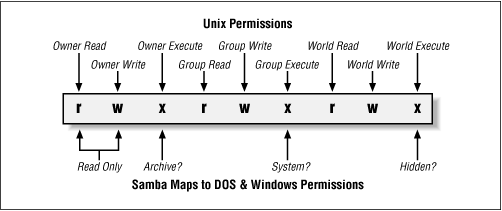

Here's a typical chmod equal permission assignment: You can also use the equal sign operator (=) to set permissions exactly, instead of adding to file permissions as shown so far.
#Unix make file executable chmod plus
So far I've just shown "add" permissions with the plus sign (+) operator this adds permissions to whatever permissions the file already has. You can also combine chmod permission commands, like this: You can also add read, write, and execute permissions for the user with one command like this: Similarly I can add write permission like this: Here's a command where I add read permission for the current user:Īs you can see, only the user has read permission on the file now.

It's important to know that you can also control file permissions for the user (u), the user's group (g), and all others (o). Linux chmod command examples (file owner) Here I add both read and write permission to the file for all users:įinally, here I add read, write, and execute permissions for all users: Next I add write permission to the file for all users: First, in this example I'll add read permission to the file for all users: I'll then show the file permissions after the command I issue. In each example, assume we start with a file named foo.txt that has no assigned permissions, like this: Given that extremely brief background on Unix/Linux file permissions, here is a collection of Unix chmod commands. This means that the owner of the file has read (r) and write (w) permissions on the file, users in the group have read permission (the 'r' in the 5th column), and all other users on the system also have read permission (the 'r' in the 8th column). The second file above shows these permissions:

This means that the owner of the file has read (r) and write (w) permissions on the file, and no other permissions are set, meaning they are denied. The first file in the example above shows these permissions: Fields 8-10 show the permissions for all other users on the system.Fields 5-7 show the permissions for the group the user belongs to.Fields 2-4 show the permissions for the owner of the file (the "user").Those nine characters can be broken up into three groups of three characters each: The first column doesn't matter for this discussion - it shows whether the file is a real file, directory, pipe, or something else - but the next nine characters show the file permissions. The permissions on your Linux files are shown in the first ten characters of those two lines. In short, when you issue an ls command with the "long" output option ( -l), like this, you'll see detailed output, as shown here: I explain this in a lot of detail in my Unix ls command examples tutorial, so I'll just share the short story about file and directory permissions here. The relationship here is that the ls command shows file permissions, and the chmod command lets you change file permissions. To really understand the details of the chmod command, you need to understand the output of the ls command. chmod and the ls command: File permission details This example makes the same assumptions as the previous command, you either own the file, or you're logged in as the root user. In the same way, you can also give a file write permission, like this: This example assumes (a) you own this file or (b) you are the root Unix user (in which case you can change the permission on any file in the system). If a file doesn't have read permission, you can add read permission to that file like this: Once your new shell script is executable, you can run your script like this:Īnother use of the chmod command is to make a file "readable". Typically you create a new Unix shell script, then make the script executable with that command. The chmod command is commonly used to make a file "executable", like this: I'll start with some simple examples, then add some more details as we go along. The chmod command name stands for "change mode", and as that name implies, the chmod command is used to change the mode of Unix/Linux files. Linux file permissions FAQ: Can you share some examples of the Unix/Linux chmod command? (Also written as, "How do I change permissions on Unix files and directories?")


 0 kommentar(er)
0 kommentar(er)
